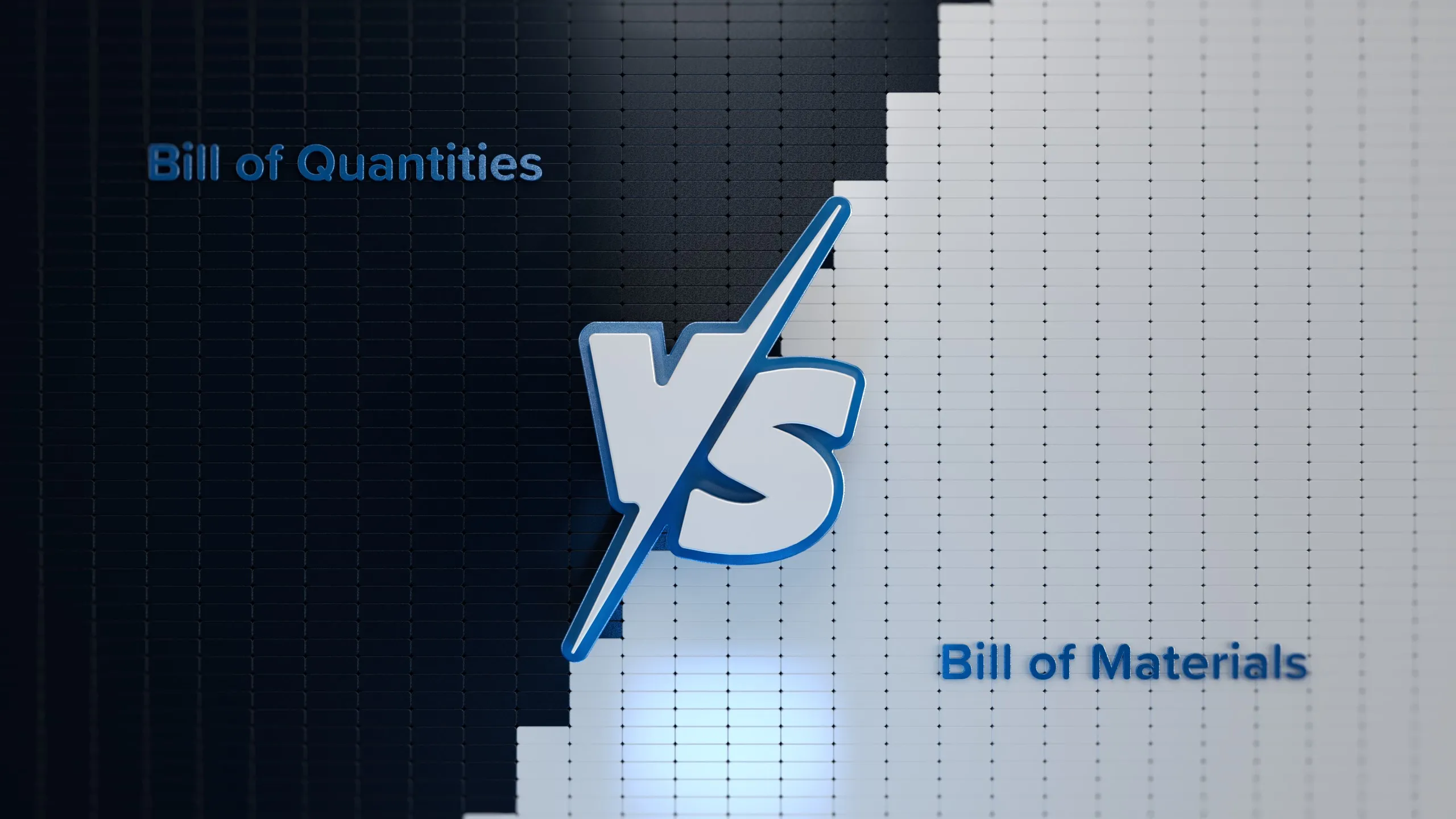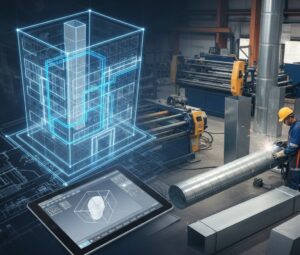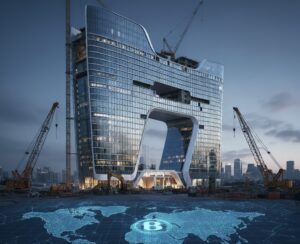Having accurate estimates for costs and a well-planned material supply are important for a project to succeed in construction and engineering. At this point, BOQ and BOM are used. Whether someone needs to manage money, get supplies or plan out a project, both documents prove very useful for stakeholders. Because of BIM consulting, preparing and processing BOQs and BOMs are experiencing significant revisions, helping them become more reliable, smoother and adaptable.
This blog explores what is BOQ, BOM meaning, how they differ, and how modern technologies like BIM are revolutionizing their development.
What is BOQ?
BOQ stands for Bill of Quantities. It is a comprehensive document used in construction projects that itemizes the materials, parts, and labor (with quantities) required to complete a project.
The BOQ meaning lies in its ability to break down the scope of work into manageable parts, allowing for accurate pricing and streamlined project execution. In essence, bill of quantity means listing out every measurable component of construction—such as earthwork, masonry, concrete, steel, plumbing, and finishes—along with the associated quantity.
A well-structured BOQ provides clarity for contractors, consultants, and clients. It minimizes discrepancies during bidding and ensures that all parties are working from the same framework. The use of BOQs is especially crucial for competitive tendering, enabling contractors to estimate costs transparently.
In short, if you’re wondering what is BOQ, it’s the backbone of construction costing and a vital document for financial and resource planning.
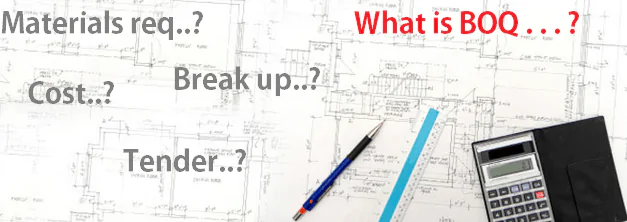
BOM Meaning and Its Role in Construction
A Bill of Materials or BOM, includes a list of the raw materials, parts, components and assemblies for constructing a product or structure. In construction, the BOM meaning refers mostly to the materials used such as steel beams, bricks, glass panels, wiring and fixtures.
Although the BOM definition is mostly applied in manufacturing, it is now being utilized in construction—mainly for use in prefabrication and modular construction.
The main objective of BOM in construction is to guide the purchasing, stock control and way items are assembled. BOQ addresses the volume of resources needed for tasks, but BOM which is used by manufacturers, engineers and fabricators, is more concerned with specific materials.
People who are looking for bom construction or bod construction should be aware that they mean different things. BOD acts as Basis of Design, apart from BOM and is used to describe design selections and what needs to be achieved.
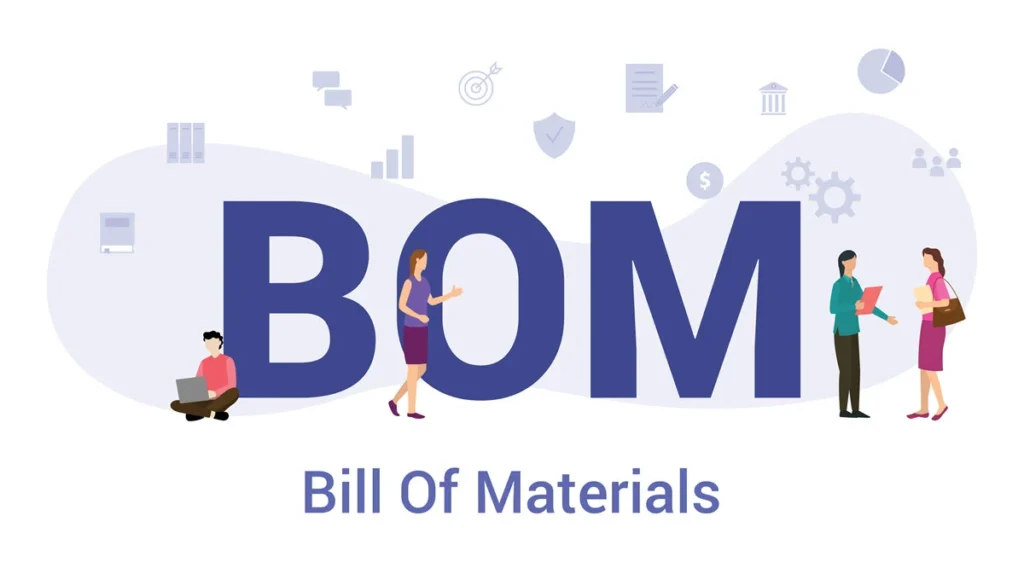
BOQ vs BOM: Key Differences
Though both BOQ and BOM are essential for construction, they serve different functions:
- BOQ (Bill of Quantities):
- Focuses on quantifying the scope of work
- Used for cost estimation and tendering
- Organized by construction tasks or elements
- BOM (Bill of Materials):
- Focuses on listing materials and components
- Used for material planning, inventory, and procurement
- Organized by parts and assemblies
In summary, while bill of quantity means breaking down work into quantifiable elements, bom meaning emphasizes the materials required to create those elements. Both are indispensable in their respective stages of a project’s life cycle.
How BIM is Revolutionizing BOQ and BOM Development
BIM changed the traditional ways BOQs and BOMs were prepared and handled. In the past, documents were developed manually by drawing, writing specifications, and filling out spreadsheets—an approach that was slow and riddled with errors.
Now, information in these documents is generated directly from the data-rich 3D models that power BIM. Thanks to architectural BIM services, precise 3D modeling & rendering, and seamless BIM coordination, producing BOQs and BOMs is faster, more accurate, and far easier to update—saving stakeholders time, money, and headaches.
- Automatic Quantity Extraction: BIM tools automatically produce precise BOQs using information from the model, so there are less chances of errors during manual data entry.
- Real-time Updates: Any change made to the design updates the BOQs and BOMs right away, ensuring everyone is on the same page.
- Improved Visualization: 3D visualization means that those involved can better see and understand the amounts of materials needed, so they can communicate and plan more effectively.
- Integrated Data: Because BIM connects all this information, the BOM can include more detailed and useful information.
In short, BIM lets you make better decisions since it supplies accurate and current data about the bill of quantity and bill of materials information.
Benefits of Using BIM for BOQ and BOM
- Accuracy: Enhanced precision in quantity takeoffs reduces cost overruns.
- Efficiency: Automates repetitive tasks, reducing manual workload.
- Cost Control: Better estimation leads to improved budgeting and procurement.
- Change Management: Design changes are automatically reflected in documentation.
- Collaboration: Centralized data supports collaboration between architects, engineers, and contractors.
Using BIM for boq and bom in construction ensures that projects stay within budget, on time, and aligned with original design intent.
Conclusion: The Future of BOQ & BOM with BIM
The integration of BIM into construction workflows is not just a trend—it’s a necessity for modern project delivery. By transforming how BOQ and BOM documents are generated and managed, Strand’s BIM expertise improves accuracy, speeds up project timelines, and reduces costs.
Understanding what is BOQ, the BOM meaning, and how these documents contribute to construction efficiency is key for any professional in the built environment. With BIM, the development of bills of quantities and bills of materials is no longer a static, disconnected process but a dynamic, integrated part of the design and construction lifecycle.
In the coming years, expect to see even greater automation, cloud integration, and AI-driven insights enhancing the way we understand and use BOQ and BOM in construction. You can also find Strand on Google Maps to see where our team is putting these innovations into practice.

